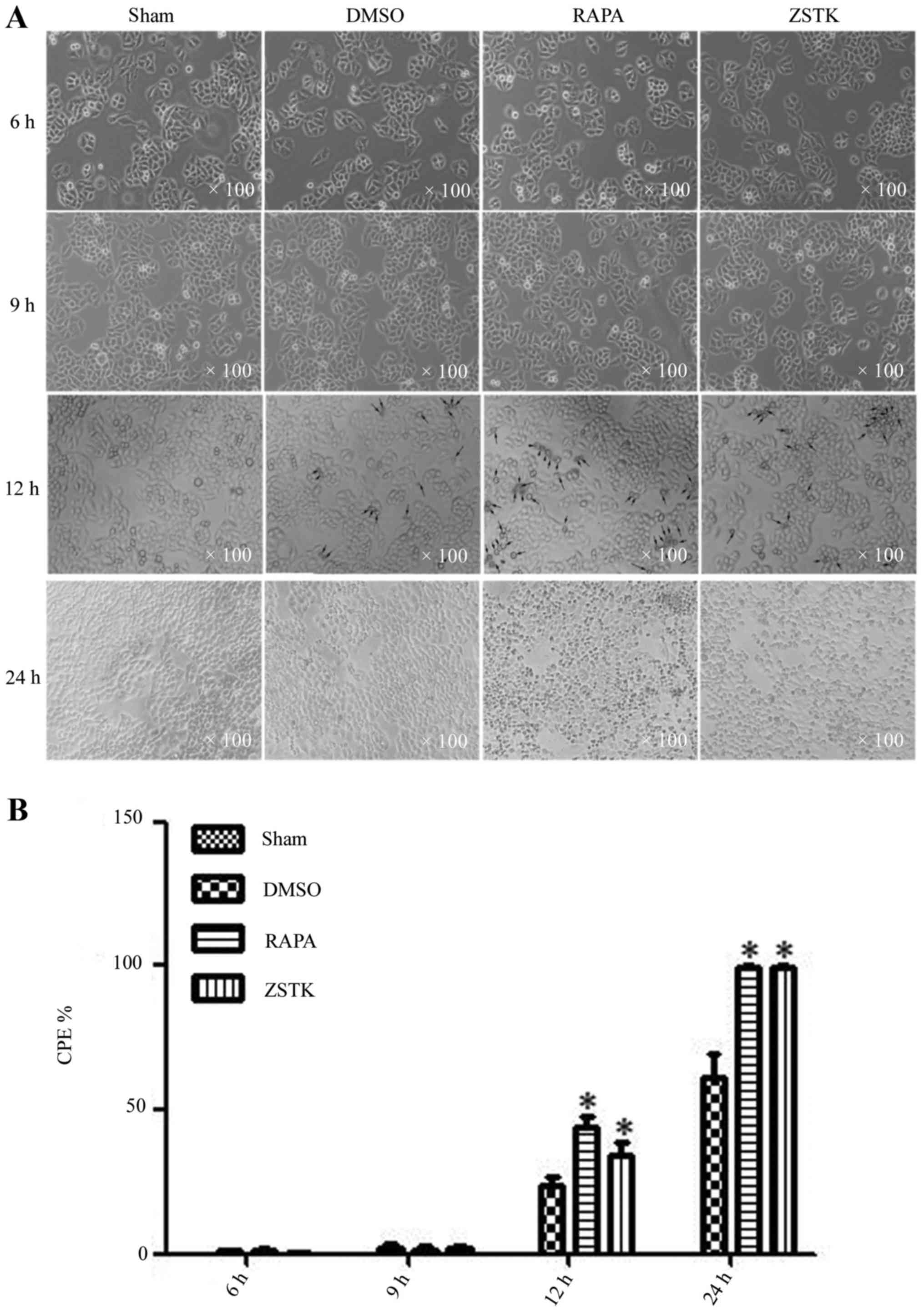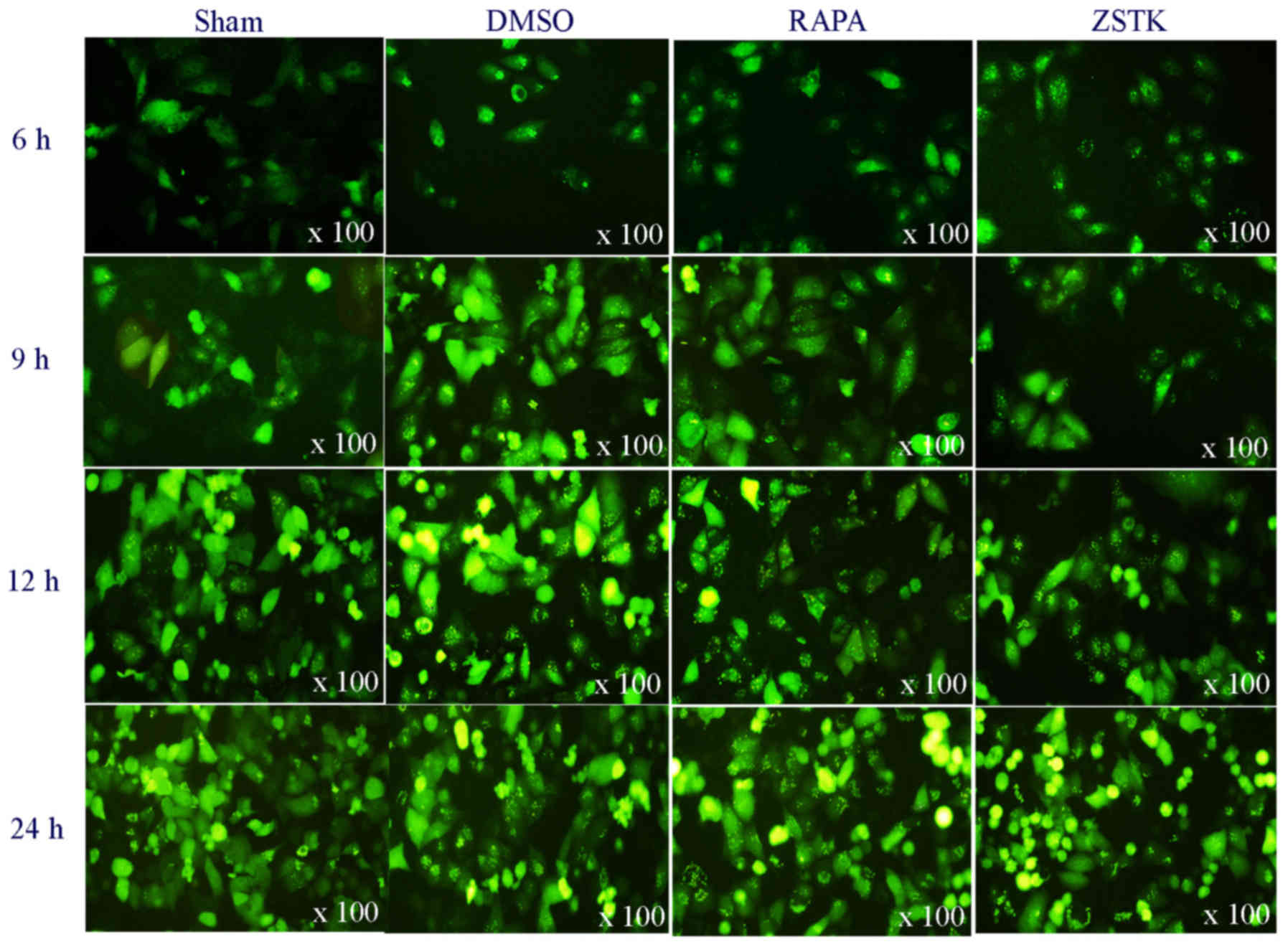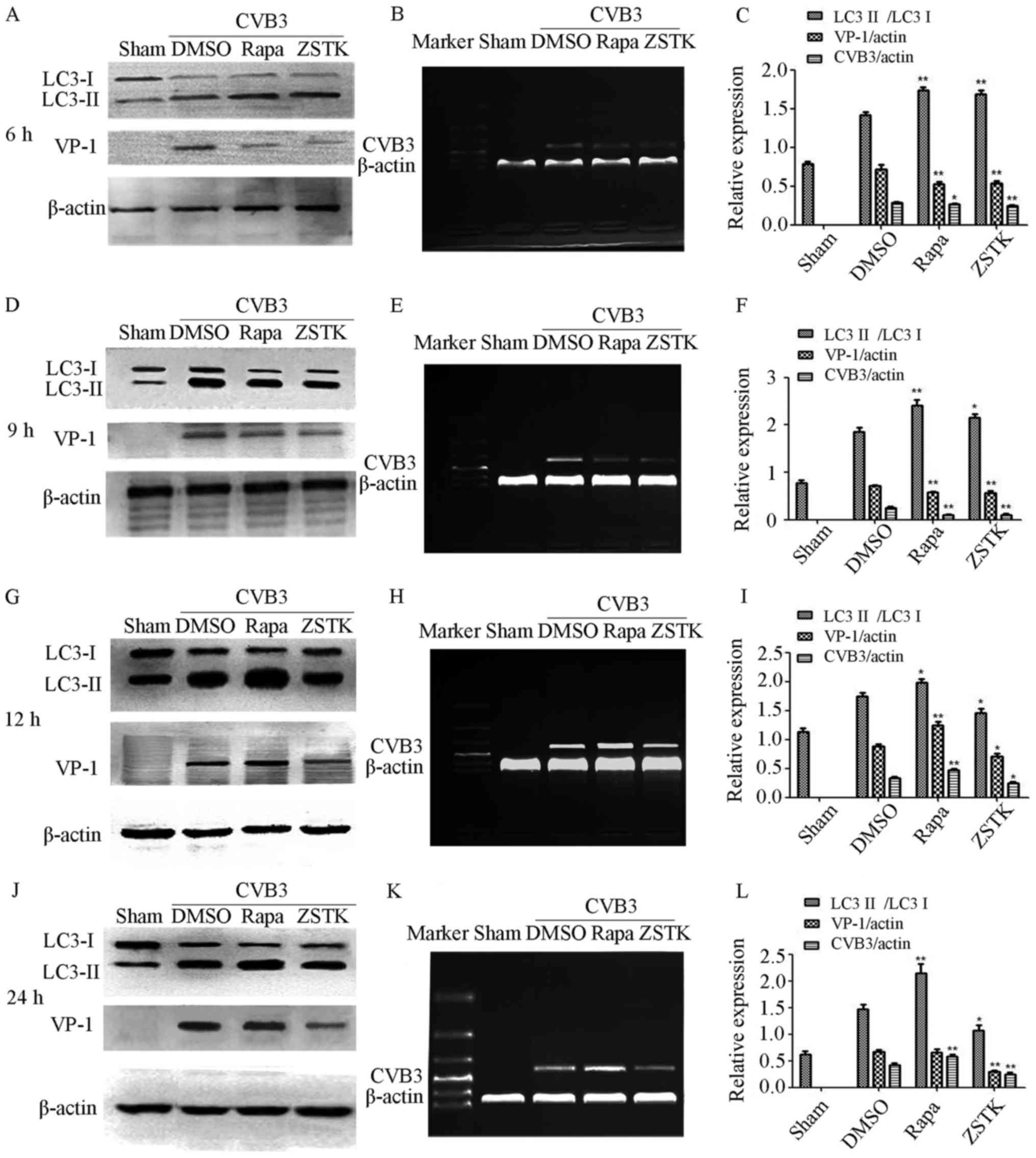|
1
|
Mizushima N: Autophagy: Process and
function. Genes Dev. 21:2861–2873. 2007. View Article : Google Scholar : PubMed/NCBI
|
|
2
|
Dice JF: Chaperone-mediated autophagy.
Autophagy. 3:295–299. 2007. View Article : Google Scholar : PubMed/NCBI
|
|
3
|
Pauly M, Assense A, Rondon A, Thomas A,
Dubouchaud H, Freyssenet D, Benoit H, Castells J and Flore P: High
intensity aerobic exercise training improves chronic intermittent
hypoxia-induced insulin resistance without basal autophagy
modulation. Sci Rep. 7:436632017. View Article : Google Scholar : PubMed/NCBI
|
|
4
|
Eisenstein M: Molecular biology: Remove,
reuse, recycle. Nature. 514:S2–S4. 2014. View Article : Google Scholar : PubMed/NCBI
|
|
5
|
Garber K: Autophagy. Explaining exercise.
Science. 335:2812012. View Article : Google Scholar : PubMed/NCBI
|
|
6
|
García-Prat L, Martínez-Vicente M,
Perdiguero E, Ortet L, Rodríguez-Ubreva J, Rebollo E, Ruiz-Bonilla
V, Gutarra S, Ballestar E, Serrano AL, et al: Autophagy maintains
stemness by preventing senescence. Nature. 529:37–42. 2016.
View Article : Google Scholar : PubMed/NCBI
|
|
7
|
Levine B, Mizushima N and Virgin HW:
Autophagy in immunity and inflammation. Nature. 469:323–335. 2011.
View Article : Google Scholar : PubMed/NCBI
|
|
8
|
Randow F and Münz C: Autophagy in the
regulation of pathogen replication and adaptive immunity. Trends
Immunol. 33:475–487. 2012. View Article : Google Scholar : PubMed/NCBI
|
|
9
|
Lee HK, Lund JM, Ramanathan B, Mizushima N
and Iwasaki A: Autophagy-dependent viral recognition by
plasmacytoid dendritic cells. Science. 315:1398–1401. 2007.
View Article : Google Scholar : PubMed/NCBI
|
|
10
|
Su C, Zhan G and Zheng C: Evasion of host
antiviral innate immunity by HSV-1, an update. Virol J. 13:382016.
View Article : Google Scholar : PubMed/NCBI
|
|
11
|
Kudchodkar SB and Levine B: Viruses and
autophagy. Rev Med Virol. 19:359–378. 2009. View Article : Google Scholar : PubMed/NCBI
|
|
12
|
Liao YH, Xia N, Zhou SF, Tang TT, Yan XX,
Lv BJ, Nie SF, Wang J, Iwakura Y, Xiao H, et al: Interleukin-17A
contributes to myocardial ischemia/reperfusion injury by regulating
cardiomyocyte apoptosis and neutrophil infiltration. J Am Coll
Cardiol. 59:420–429. 2012. View Article : Google Scholar : PubMed/NCBI
|
|
13
|
O'Connell D and Liang C: Autophagy
interaction with herpes simplex virus type-1 infection. Autophagy.
12:451–459. 2016. View Article : Google Scholar : PubMed/NCBI
|
|
14
|
Doria A, Gatto M and Punzi L: Autophagy in
human health and disease. N Engl J Med. 368:18452013. View Article : Google Scholar : PubMed/NCBI
|
|
15
|
Deretic V and Levine B: Autophagy,
immunity, and microbial adaptations. Cell Host Microbe. 5:527–549.
2009. View Article : Google Scholar : PubMed/NCBI
|
|
16
|
Virgin HW and Levine B: Autophagy genes in
immunity. Nat Immunol. 10:461–470. 2009. View Article : Google Scholar : PubMed/NCBI
|
|
17
|
Fader CM, Aguilera MO and Colombo MI:
Autophagy response: Manipulating the mTOR-controlled machinery by
amino acids and pathogens. Amino Acids. 47:2101–2112. 2015.
View Article : Google Scholar : PubMed/NCBI
|
|
18
|
Zhou XJ and Zhang H: Autophagy in
immunity: Implications in etiology of autoimmune/autoinflammatory
diseases. Autophagy. 8:1286–1299. 2012. View Article : Google Scholar : PubMed/NCBI
|
|
19
|
Scharl M and Rogler G: Inflammatory bowel
disease: Dysfunction of autophagy? Dig Dis. 30 Suppl 3:S12–S19.
2012. View Article : Google Scholar
|
|
20
|
Puri P and Chandra A: Autophagy modulation
as a potential therapeutic target for liver diseases. J Clin Exp
Hepatol. 4:51–59. 2014. View Article : Google Scholar : PubMed/NCBI
|
|
21
|
Zhong L, Hu J, Shu W, Gao B and Xiong S:
Epigallocatechin-3-gallate opposes HBV-induced incomplete autophagy
by enhancing lysosomal acidification, which is unfavorable for HBV
replication. Cell Death Dis. 6:e17702015. View Article : Google Scholar : PubMed/NCBI
|
|
22
|
De Leo A, Colavita F, Ciccosanti F, Fimia
GM, Lieberman PM and Mattia E: Inhibition of autophagy in
EBV-positive Burkitt's lymphoma cells enhances EBV lytic genes
expression and replication. Cell Death Dis. 6:e18762015. View Article : Google Scholar : PubMed/NCBI
|
|
23
|
Li J, Liu Y, Wang Z, Liu K, Wang Y, Liu J,
Ding H and Yuan Z: Subversion of cellular autophagy machinery by
hepatitis B virus for viral envelopment. J Virol. 85:6319–6333.
2011. View Article : Google Scholar : PubMed/NCBI
|
|
24
|
Watson RO, Manzanillo PS and Cox JS:
Extracellular M. tuberculosis DNA targets bacteria for autophagy by
activating the host DNA-sensing pathway. Cell. 150:803–815. 2012.
View Article : Google Scholar : PubMed/NCBI
|
|
25
|
Orvedahl A, Sumpter R Jr, Xiao G, Ng A,
Zou Z, Tang Y, Narimatsu M, Gilpin C, Sun Q, Roth M, et al:
Image-based genome-wide siRNA screen identifies selective autophagy
factors. Nature. 480:113–117. 2011. View Article : Google Scholar : PubMed/NCBI
|
|
26
|
Liu J, Wang H, Gu J, Deng T, Yuan Z, Hu B,
Xu Y, Yan Y, Zan J, Liao M, et al: BECN1-dependent CASP2 incomplete
autophagy induction by binding to rabies virus phosphoprotein.
Autophagy. 13:739–753. 2017. View Article : Google Scholar : PubMed/NCBI
|
|
27
|
Garmaroudi FS, Marchant D, Hendry R, Luo
H, Yang D, Ye X, Shi J and McManus BM: Coxsackievirus B3
replication and pathogenesis. Future Microbiol. 10:629–653. 2015.
View Article : Google Scholar : PubMed/NCBI
|
|
28
|
Sin J, Mangale V, Thienphrapa W, Gottlieb
RA and Feuer R: Recent progress in understanding coxsackievirus
replication, dissemination, and pathogenesis. Virology.
484:288–304. 2015. View Article : Google Scholar : PubMed/NCBI
|
|
29
|
Chen Z, Yang L, Liu Y, Tang A, Li X, Zhang
J and Yang Z: LY294002 and Rapamycin promote coxsackievirus-induced
cytopathic effect and apoptosis via inhibition of PI3K/AKT/mTOR
signaling pathway. Mol Cell Biochem. 385:169–177. 2014. View Article : Google Scholar : PubMed/NCBI
|
|
30
|
Zhang HM, Ye X, Su Y, Yuan J, Liu Z, Stein
DA and Yang D: Coxsackievirus B3 infection activates the unfolded
protein response and induces apoptosis through downregulation of
p58IPK and activation of CHOP and SREBP1. J Virol. 84:8446–8459.
2010. View Article : Google Scholar : PubMed/NCBI
|
|
31
|
Zhai X, Bai B, Yu B, Wang T, Wang H, Wang
Y, Li H, Tong L, Wang Y, Zhang F, et al: Coxsackievirus B3 induces
autophagic response in cardiac myocytes in vivo. Biochemistry
(Mosc). 80:1001–1009. 2015. View Article : Google Scholar : PubMed/NCBI
|
|
32
|
Xin L, Xiao Z, Ma X, He F, Yao H and Liu
Z: Coxsackievirus B3 induces crosstalk between autophagy and
apoptosis to benefit its release after replicating in
autophagosomes through a mechanism involving caspase cleavage of
autophagy-related proteins. Infect Genet Evol. 26:95–102. 2014.
View Article : Google Scholar : PubMed/NCBI
|
|
33
|
Robinson SM, Tsueng G, Sin J, Mangale V,
Rahawi S, McIntyre LL, Williams W, Kha N, Cruz C, Hancock BM, et
al: Coxsackievirus B exits the host cell in shed microvesicles
displaying autophagosomal markers. PLoS Pathog. 10:e10040452014.
View Article : Google Scholar : PubMed/NCBI
|
|
34
|
Li X, Li Z, Zhou W, Xing X, Huang L, Tian
L, Chen J, Chen C, Ma X and Yang Z: Overexpression of 4EBP1,
p70S6K, Akt1 or Akt2 differentially promotes Coxsackievirus
B3-induced apoptosis in HeLa cells. Cell Death Dis. 4:e803–e809.
2013. View Article : Google Scholar : PubMed/NCBI
|
|
35
|
Xin L, Ma X, Xiao Z, Yao H and Liu Z:
Coxsackievirus B3 induces autophagy in HeLa cells via the
AMPK/MEK/ERK and Ras/Raf/MEK/ERK signaling pathways. Infect Genet
Evol. 36:46–54. 2015. View Article : Google Scholar : PubMed/NCBI
|
|
36
|
Hoeflich KP, O'Brien C, Boyd Z, Cavet G,
Guerrero S, Jung K, Januario T, Savage H, Punnoose E, Truong T, et
al: In vivo antitumor activity of MEK and phosphatidylinositol
3-kinase inhibitors in basal-like breast cancer models. Clin Cancer
Res. 15:4649–4664. 2009. View Article : Google Scholar : PubMed/NCBI
|












